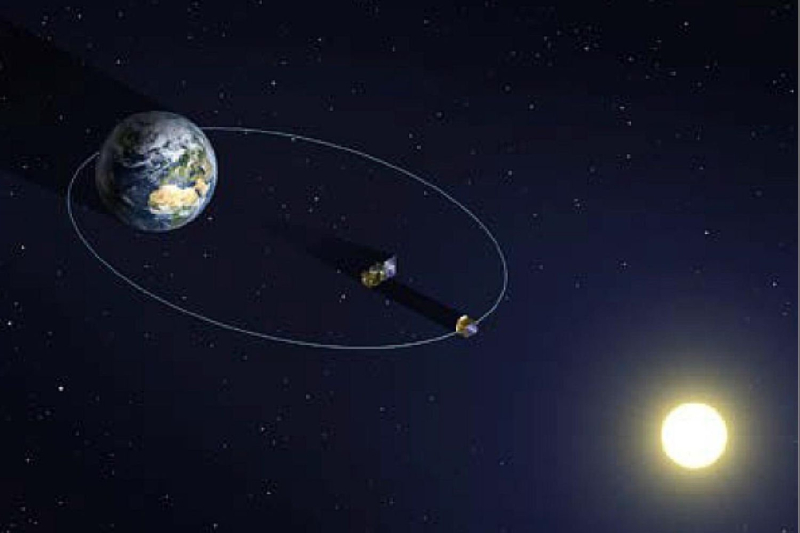
© ESA
Studying the solar atmosphere is one of the most complex missions for an astronomer. Invisible to the naked eye, it only appears by hiding the heart of the Sun, as during an eclipse. However, these alignments of the stars are extremely rare.
The next total eclipse should be observable in North America on April 8. After this date, you have to wait 370 years to see another one in this position. North American study centers will therefore have all eyes fixed on the Sun on April 8.
Proba -3: creating artificial eclipses< /h2>
To avoid keeping astronomers waiting for more than three centuries, the European Space Agency (ESA) has just unveiled the Proba-3~60 project ~/strong>. This set of two satellites should fly in concert 60,000 kilometers from Earth. They would then be able to create “artificial” eclipses aligning perfectly with the Sun.
During the two-year mission, the main shield, 1.40 meters wide and 250 kilograms heavy, will play the role of the Moon. It will mask the sunlight to bring out the atmosphere. The second satellite (300 kilograms) will be equipped with a coronagraph and will collect data from this experiment to allow scientists to learn more about the Sun.

© ESA
Surgical precision
This outdoor operation requires extreme precision. To function properly, the two satellites will need to be 144 meters apart, to the nearest millimeter. The ESA recalls that during the last observation of this kind, with the Prisma mission, the margin of maneuver was 10 centimeters.
For Raphaël Rougeot, systems engineer at ESA and coronagraph specialist, this mission is of particular interest. He hopes to be able to study the solar corona, this region of the star, which is still little-known.
Not very dense, this area is nevertheless extremely hot, exceeding a million degrees. A real enigma for scientists when we know that the surface of the Sun, a few kilometers below, is “only” of 6000°C. It is this corona which is also the origin of solar flares. A phenomenon that can have an impact on our satellites and modern means of communication.
A demonstration of power
In addition to the obvious scientific interest of such an expedition, Proba-3 is also a way of proving that Europe is still at the forefront of astronomical observation. As Damien Galano, ESA mission manager, explains, it's a great opportunity to demonstrate all of European know-how.
It's not enough to launch two satellites into orbit. This part of the journey is reserved for an Indian rocket. It’s after that that the journey gets tough. Engineers must master in-flight navigation, with ultra-responsive and efficient algorithms.
To always maintain the same distance between the two satellites, ESA relies on a laser sensor. The latter must constantly provide an estimate of the distance between the two devices.
The “ Lune ” satellite, which will analyze this information, will be then in charge of using its micropropulsion system to keep a gap of 144 meters between the two satellites. The Proba-3 mission is expected to leave Earth next September.
📍 To not miss any news from Presse-citron, follow us on Google News and WhatsApp.
[ ]

